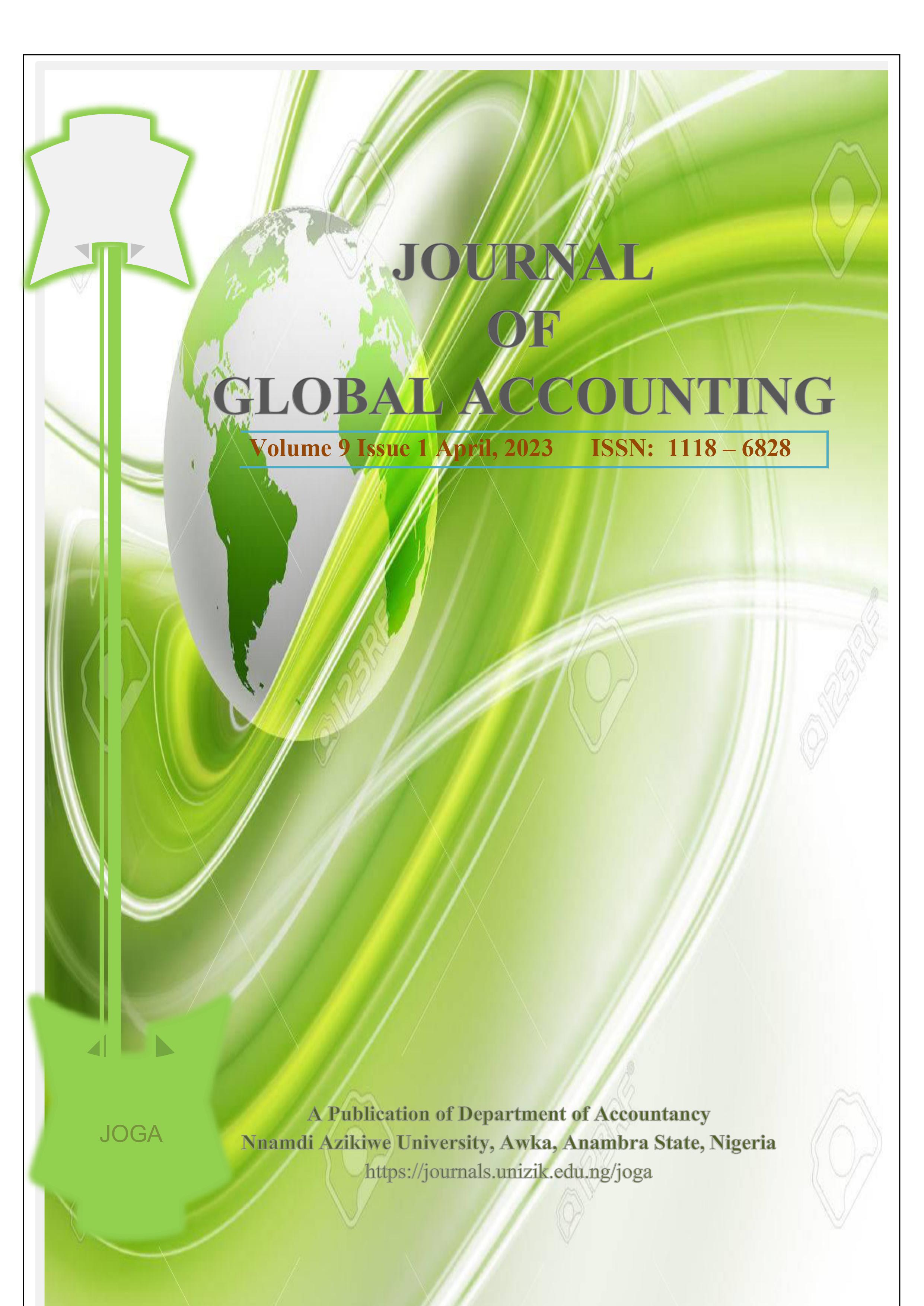EFFECT OF TAX REVENUE ON INFRASTRUCTURAL DEVELOPMENT IN NIGERIA
Keywords:
Capital Expenditure, Company Income Tax, Custom Duties, Economic Growth, Excise Duties, Petroleum Profit Tax, Tax Revenue, Value Added TaxAbstract
This study assesseS the effect of tax revenue on infrastructural development of Nigeria. Petroleum profit tax, company income tax, value added and custom and excise duties tax were used to proxy tax revenue, while capital expenditure was used to measure economic growth for a period of twenty seven years spanning from 1995 to 2021. Based on the objectives of the study, four hypotheses were formulated. Ex-Post facto research design was adopted. The time series data were obtained from Federal Ministry of Finance, Federal Inland Revenue Services, Central Bank of Nigeria, National Bureau of Statistics and the World Bank Publications. As a preliminary step in testing, the study employed the Augmented Dickey Fully Unit root test to confirm the order of integration of the time series variables. The study employed descriptive statistics and inferential statistics using Pearson correlation and Ordinary Least Square (OLS) regression analysis. The specific findings showed that: Petroleum profit tax has a significant and positive effect on capital expenditure of Nigeria (B= 0.481341; p-value = 0.0060 < 0.05); Company income tax has a significant and positive effect on capital expenditure (B2=0.602013; p-value = 0.0000 0.05); Value Added Tax has a significant and positive effect on capital expenditure (B3= 1.155875; p-value = 0.0000 0.05); Customs and excise duty has a significant and positive effect on capital expenditure (B4= 1.530929; p-value = 0.0000 < 0.05) of Nigeria at 5% level of significance respectively. It was recommended that Government should put in place adequate measure to ensure that revenue generated from tax is effectively utilized to develop and grow the economy through proper infrastructural development.
Downloads
Published
Issue
Section
License
Copyright (c) 2023 JOGAArticles submitted to JOGA should not have been published or are currently under review by another Journal. Kindly see the guide for the preparation of the manuscript for details. Successful submission of articles by author(s) for publication clearly implies that the work is not an infringement of any existing copyright warranty as JOGA reserves the right to be indemnified by the author(s) where any breach of such warranty is proven. For ease of dissemination and to ensure proper policing of use, papers and contributions become the legal copyright of JOGA once published unless otherwise agreed.
Permission clearance should be obtained by the author(s) where applicable for the use of any content of interest not originally created by them. This must be done before the submission of the article to JOGA. Failure to do so may lead to a lengthy delay in publication, as JOGA is unable to publish any article which has permissions pending. Thus, the rights JOGA requires are:
- Non-exclusive right to reproduce the material in the article or book chapters.
- Print and electronic rights.
- To use the material for the life of the work (for instance, there should be no time restrictions on the re-use of material).
Where tables, figures or excerpts of more than 250 words are reproduced from another source, it is expected that:
- Author(s) should obtain the necessary written permission in advance from any third-party owner of the copyright for the use in print and electronic formats of any of their text, illustrations, graphics, or other material in their manuscript. Permission must also be cleared for any minor adaptations of any work not originally created by the author(s). The author (s) should not assume that any content freely available on the web is free to use.
- Where the author adapts a significant number of any material, the author(s) must inform the copyright holder of the original work.
- Author obtains any proof of consent statements
- The author must acknowledge figure(s) and content adopted or adapted in work utilizing source(s) and further capture them in the list of references.

